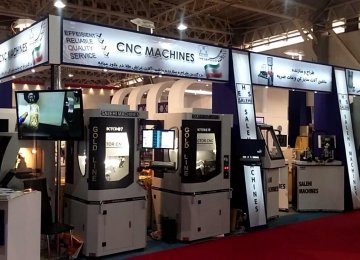Tehran was host to the Ninth International Exhibition of Gold, Silver, Jewelry, Watch and Related Industries (Iran Gold Expo 2017, for short) last month.
The jewelry industry is one that many people think of as fairly unchanging, as the ancient craft has been around for thousands of years. In the nine years since the Iran Gold Expo began, however, a lot has changed in the world of jewelry; in fact, a lot has changed in just the last couple of years.
According to Iranian publication 3DBaz, traditional methods of fabricating jewelry have been around so long for good reason–they’re effective, and in the right hands (and for the right price) they can produce beautiful, high-quality pieces that can last for decades if not centuries.
The older methods of jewelry-making are not expected to disappear entirely, but 3D printing has certainly made a lot of headway in the jewelry industry recently, and that’s a trend unlikely to disappear.
It’s a trend that was very much in evidence at the Iran Gold Expo, too. Two types of exhibitors had a strong presence at the show: older jewelry companies that have been gradually integrating 3D printing into their manufacturing and design processes, and 3D printing companies and enthusiasts that have found their niche in jewelry and are using 3D printing to bring something new to the industry.
A few big-name 3D printing companies exhibited, including Formlabs, which owes a lot of its success to its high-detail jewelry printers, and 3D Systems, which isn’t exactly well known for jewelry printing.
Nevertheless, it offers wax printers like the ProJet 3510 CPX and others capable of creating quality molds for jewelry casting, making the design and fabrication of complex pieces faster, easier and less expensive.
Seeing large 3D printing companies in the midst of local exhibitors is more evidence that 3D printing is starting to take over even the oldest of industries.
According to the report, traditional jewelry-makers were something of a rarity at the expo, which is somewhat surprising, especially as 3D printing has not yet taken off in Iran the way it has elsewhere. However, it’s starting to grow within the country, and according to Ahmad Mokhtari, editor-in-chief of 3DBaz, the exhibition demonstrated how much potential and room for growth there really is.
“It was quite a neat experience,” Mokhtari told 3DPrint.com. “I just realized how everything is going to grow in the next coming years. Surely, it could be surprising, since the growth of this industry is impressing. I’m looking forward to finding and discovering new startups among producers to help them know more about science, engineering, marketing, finance and media management.”
Mokhtari noted that engineers tend to observe this industry in a linear way and don’t know enough about the same businesses globally.
“The gap between production and marketing was enormous … The point is that I hope the lack of applied science would become less in 2018 and afterwards. The hunger for knowing more is always a win-win deal,” he said.
“I recommend the participant to invest on growing among big companies and not stand still. 3D printing is one of those trillion dollar opportunities; like VR, AR, Robotics and etc.”
There’s a lot of promise for startups in the country, especially in 3D printing, as the government recently demonstrated its intention to invest in advanced manufacturing through the establishment of a new division of the Vice Presidency for Science and Technology.
3D printing is something that tends to snowball once it has been introduced, and there’s no telling how many people might have learned more and been inspired by its prominence at the Iran Gold Expo.






Add new comment
Read our comment policy before posting your viewpoints